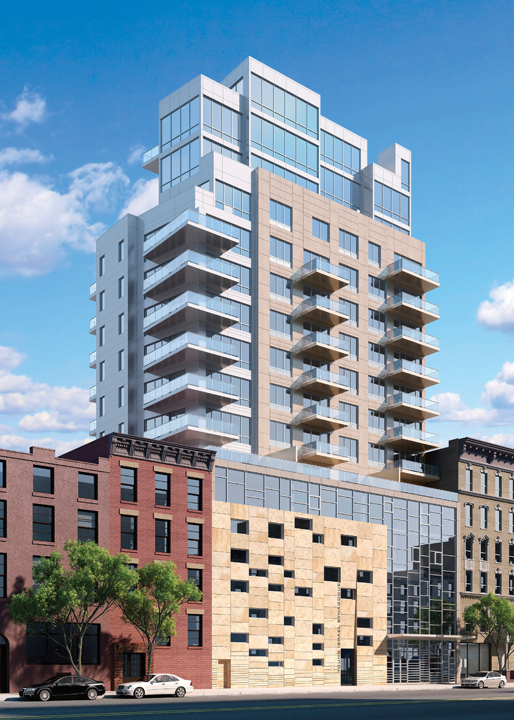Housing & New York Designs for Living
Posted on 04. Nov, 2008 by Administrator in Lifestyle
Efficient use of space has long been one of the tenets of architecture. But a fundamental shift is taking place — that from preference to necessity. Nowhere is this more true than in New York City, where housing, commercial, and public space needs continue to escalate while the city’s physical dimensions remain unchanged.
+Housing: 2008 AIA New York Designs for Living Exhibition demonstrates that aesthetics need not be sacrificed in the name of practicality. The installation, which features eight projects, is on display at the Center for Architecture in Greenwich Village until January 19, 2009.
Exhibit curator Alexandra Lange recently offered h her perspective on the value that hybrid buildings bring to a major metropolitan area.
h: What was the impetus for +Housing?
Alexandra Lange: Keeping New York City livable requires that we maintain the essential public life of the city: economic diversity through affordable housing and job creation, cultural diversity through spaces to display but also to create the arts, energy through parks and recreation programs. The result is a series of hybrid types, school + Housing, theater + Housing, museum + Housing, even in the case of St. Vincent’s, hospital + Housing—hence the name of the show.
AL: Two projects featured in the exhibit, GreenBelt and the Renaissance Ballroom, reuse and will reuse existing structures. The former kept a few walls of their site’s original plumbing warehouse as part of the entrance and performance space on the first floor; the latter will preserve the historic facades of Harlem’s Renaissance ballroom and casino, while inserting new community and cultural spaces, as well as a residential tower,
behind them.
h: Is green building a by-product of solving the space issue or is it an integral part of the solution?
AL: More and more new development in NYC is green, and there are several projects in this show which are or will be LEED certified, including GreenBelt and Archstone Clinton.
h: There are eight projects represented in the exhibit. Can you touch on the general similarities and distinctions among them?
AL: This phenomenon is occurring all over the city, and at what we show to be a variety of scales, from GreenBelt (shown above)—sort of the mascot for the exhibition, with a handful of condominiums and a first-floor performance and rehearsal space—to Anable Basin (below left), which may include not only waterborne arts spaces but artist studios over galleries, riverfront parks, and greater integration of new and old on the Long Island City waterfront. In between GreenBelt and Anable Basin in size are Archstone Clinton and the Young Israel Synagogue (photo opposite page). Like GreenBelt, both allow a historic neighborhood use to remain—theaters in the first case, a synagogue in the second—while increasing density and potentially amenities for their respective areas. Archstone Clinton, like GreenBelt, is a sustainable project, another aspect of urban livability for the future.
h: Are there demonstrable economic advantages to multi-purpose building/renovation? What are some other advantages, other than the obvious (more practical usage of space)?
AL: In some cases, like Beekman Tower, the developer got additional floors up top in exchange for building a public school. Partnering with a religious or community institution can also trigger zoning changes that increase a project’s buildable area. Less cynically, some developers feel an arts institution adds prestige to their building. In the case of GreenBelt, the investors were willing to take less profit to include a performance space on the first floor, allowing artists to remain in a neighborhood that had been a haven but is becoming increasingly high-rent.
h: Has the dismal state of the economy affected the intended impact of
your exhibit?
AL: The economic situation certainly changed from April, when I started planning, to October, when the show opened. Yes, these are all boom projects, when it seemed as if the desire for market-rate condominiums was endless. But now that the bubble has burst, I believe there is still room and need for this kind of strategic partnership. It is still a model
that can work.













Avril Smith
23. Mar, 2011
Rather interesting site you’ve got here. Thanks the author for it. I like such themes and everything that is connected to this matter. I would like to read more soon.
Avril Smith
lingerie escort milan